Trump Tariffs Are Looming on Markets: Deadline Is Nearing for US Trade Partners
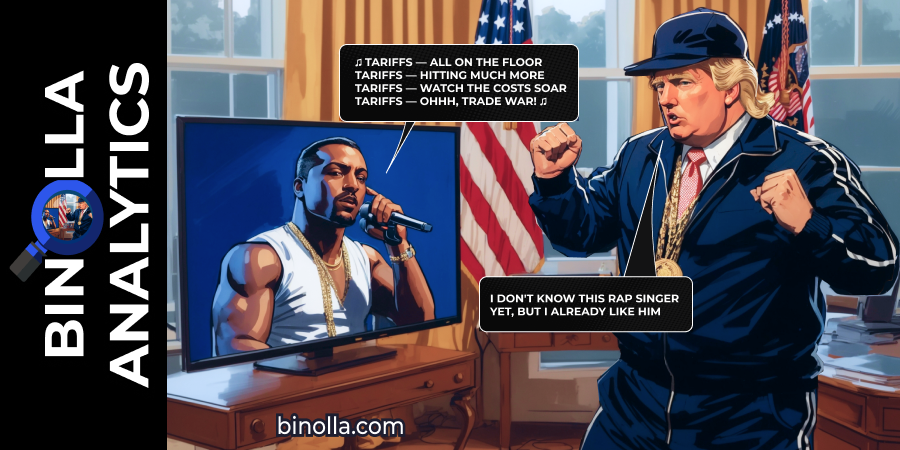
As the 9th of July is approaching, market participants are looking forward to seeing the next move by the US President and his administration. According to the recent comments from the US Treasury Secretary Scott Bessent, the United States is ready to increase tariffs from the current 10% to a range from 11 to 50% after this date.
Moreover, the Head of the White House is disappointed with the negotiation process between the US and its counterparts. The only successful deal by now is the bargain between the US and China about rare earth metals and other categories of commodities/goods. However, the optimism has been offset by Trump’s complaints about the discussions with Japan. Moreover, negotiations with other key trade partners have also stalled. There is no current progress in discussions with the Eurozone, the UK, and other major economies.
Contents
EURUSD: The Euro Extends Gains on Positive Eurozone Data
The currency pair reached new highs on Tuesday amid better-than-expected manufacturing data from Spain. The index jumped over 51, which is almost 1 point higher than forecasted. Additionally, the French final manufacturing PMI was also above expectations.
On the Greenback front, the US dollar remains defensive as the so-called “Liberation Day” is coming. Moreover, the consequences of tariffs have already loomed over the US economy, which is clearly seen in the first quarter GDP falling below expectations. The attacks of the US President on the Fed chair add uncertainty and put additional pressure on the American currency. Currently, market participants expect two rate cuts this year, with the first to be done in September. However, Donald Trump is disappointed with Powell’s indecision. He has already mentioned that the Fed chair’s successor can be named in September, which will be an unprecedented move by the US President.
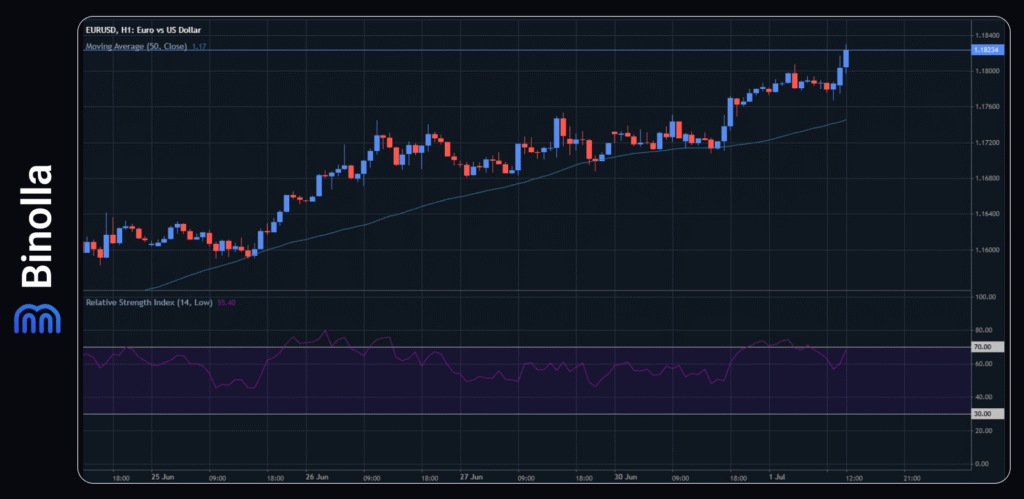
From a technical analysis perspective, nothing prevents the Euro from moving higher against the US dollar. Traders can buy at 1.1780 after a correction, which may take place as the RSI indicator is in the overbought zone. Moreover, if the price moves above 1.1830, buy orders will also be preferable.
On the downside, EURUSD can change its direction below 1.1750, from where traders can place sell orders.
GBPUSD: Pound Is Supported By the BoE-Fed Monetary Policy Divergence
The recent data from the United States supports the idea that the Federal Reserve is likely to make two easing moves this year. Moreover, some FOMC members are likely to vote for a rate cut during the upcoming meeting in July. This undermines the US dollar against its major counterparts, including the pound.
The skirmish between the President of the United States and the Fed chair adds pressure on the American currency, while the Bank of England seems to be in a more advantageous position, as they are not in a hurry to make any decisions. Anyway, today’s Forum on Central Banking in Sintra may shed light on what both central banks are planning to do. Market participants are anticipating Jerome Powell and Andrew Bailey to have speeches and provide some additional details about the future moves of their financial institutions.
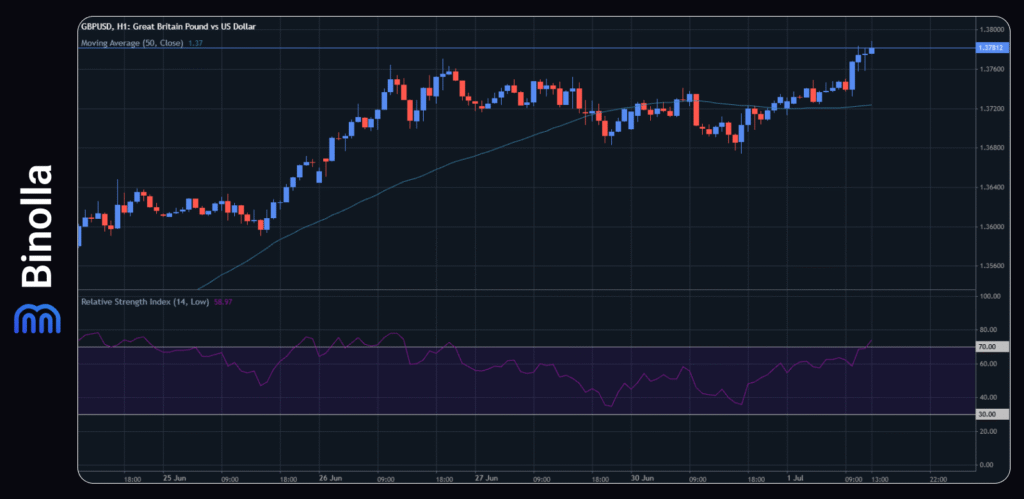
On the technical analysis side, the currency pair has made it above 1.3750, which opened a way for GBP/USD to reach 1.3800. Buyers can open positions from this level or wait for a possible correction, which may take place as the RSI indicator shows the overbought state of the market. If the price moves below 1.3720, sellers may take control.
Brent Crude Oil: Financial Markets Lose Interest in Energies
The ease of Middle East tensions puts pressure on the oil market as fears of supply interruptions are wiped away. However, several supportive factors still increase demand in the financial markets. Saudi Arabia’s oil producers are willing to increase oil prices for Asian buyers to the highest level in four months in August.
Moreover, US officials are scaling back their goals for agreements with the key trade partners. Instead of imposing the harshest levies on counterparts, they are looking for phased deals with the major counterparts, which supports positive market sentiment.
Another supportive factor is the possibility of a new round of interest rate cuts in the United States. According to market participants’ expectations, the US central bank is likely to make the first step in September. Moreover, some Fed members will vote for a rate cut in July. Tensions between the US President and the Fed chair ignite the sell-offs of the US currency.
On the downside, the upcoming decisions of a new round of production increase by the OPEC+ may put some pressure on oil.
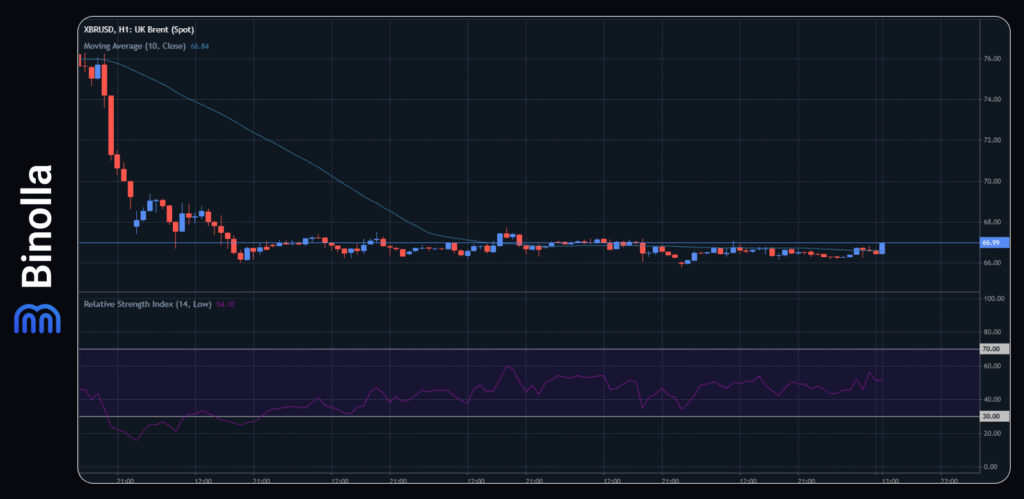
From a technical analysis standpoint, Brent Crude Oil is trading within a tight range. Buyers can place orders above 67.80, while short positions can be profitable below 65.60.
BTCUSD: Bitcoin Continues to Lose Ground
Bitcoin has had a sharp increase right after the Israel-Iran ceasefire, but stepped backwards and is currently trading below the SMA50. A decrease in BTC demand is not caused by any fundamentals and can be explained by a simple correction to the previous growth. In general, Bitcoin is trading within a wide range.
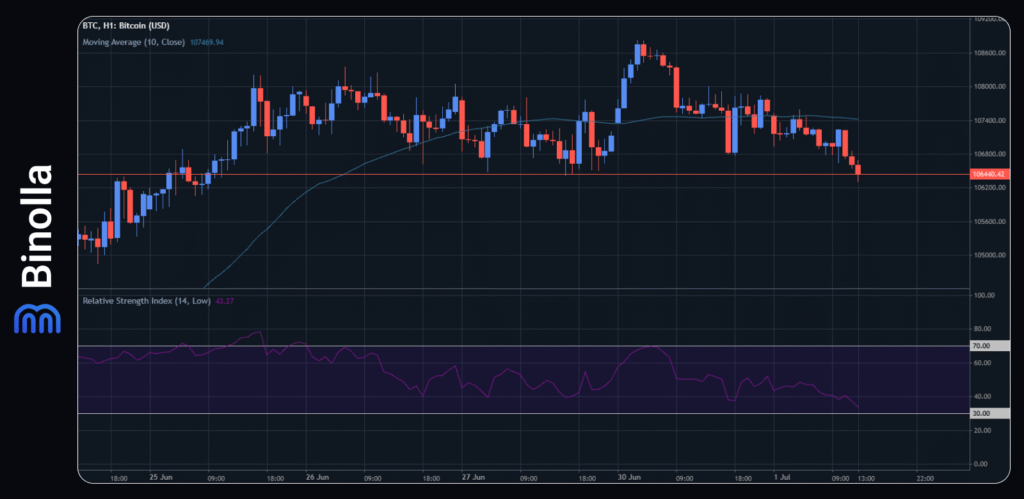
BTCUSD hourly chart
From the technical analysis standpoint, BTC is fluctuating close to the bottom of the range. Sellers can engage below 106,300. When it comes to long positions, buyers can step in if the price breaks above 107,400.







